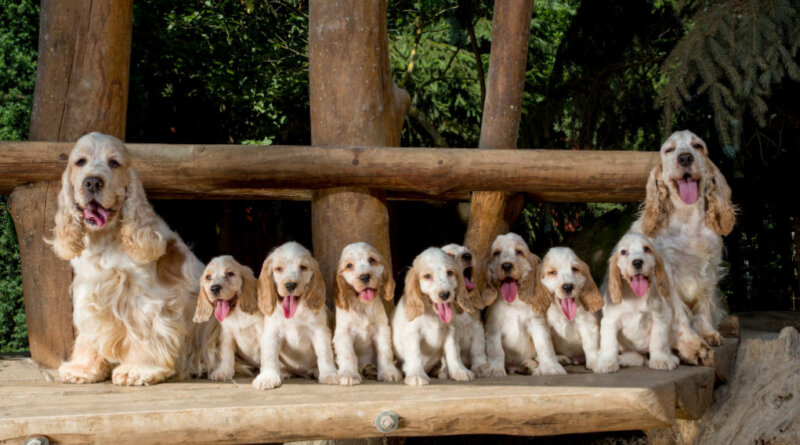What You Should Know – Top Dog Tips
THE PRACTICE OF INBREEDING DOGS is a controversial thing.
While some people find it beneficial, others are firmly against it because of the known consequences it brings.
A study published in Canine Medicine and Genetics states that a dog’s most distinct (and most often preferred) features are the result of remarkably high levels of inbreeding.
In fact, the majority of canine breeds nowadays are inbred dogs.
That means a Dalmatian’s signature spot and a French Bulldog’s stubby snout are most likely the physical attributes preserved from their own lineage.
And some dog enthusiast prefers highlighting those unique traits. After all, who doesn’t want a poster boy pooch that has the perfect visual representation of his breed, right?
However, the reality is nothing perfect comes without a cost.
Because however flawless they may look, inbred dogs come with multiple issues and problems that’ll only make them and their owner suffer later on in life.
In this article, let’s discuss what dog inbreeding is, the signs of inbred dogs, the coefficient of inbreeding, and several problems that could happen to inbred dogs.
Inbreeding Dogs: What is it?
Before we get into the nitty-gritty, first things first: what is dog inbreeding?
Dog inbreeding is basically mating between two relative dogs to produce a pup.
You may imagine it as something synonymous with human incest (anyone who’ve seen GOT or House of Dragons here?) but some argue canines have a different standard.
They say mating between any related dogs—mother/son, father/daughter, brother/sister, etc—is considered fair game.
Breeders usually do this to keep the looks while fixing some other traits in the breed.
But that’s not to say inbreeding only happens because of breeders. Sometimes, it just happens naturally (and not only in dogs, mind you!)
In the same study that we have mentioned above, the researchers found out that 227 canine breeds (comprising 49,000+ dogs) have a 25% inbreeding coefficient.
It is the genetic equivalent of a dog produced from a father/daughter or mother/son mating or the mating of a full brother/sister.
This is higher than what’s considered safe for both wild animals and humans, according to a report published in Gizmodo.
In fact, only 3% to 6% of inbreeding in humans can already result in higher chances of any hereditary disorders or cancer.
Just imagine then what could a 25% Coefficient of Inbreeding does in dogs.
Understanding the Coefficient of Inbreeding (CoI)
The Coefficient of Inbreeding is a formula developed by Sewall Wright and Gustave Malécot to calculate the probability of inheriting 2 copies of the gene variant from an ancestor that’s common to both the mother and the father.
Simply speaking, the lower the percentage, the lower the degree of inbreeding.
Meaning, it’s always better and advisable to get a puppy with the lowest possible inbreeding coefficient.
Sometimes, responsible breeders do this on their own in an attempt to avoid a known risk.
However, dog owners who are looking for a partner for their dogs can do their own computation of COI.
You can check out The Kennel Club’s Calculator for Coefficient of Inbreeding for this.
This uses all the pedigree information stored in their database and it does not limit the number of generations used.
The calculation will give you a percentage score which you can refer to in the following table:
- 0% = a dog with two apparently unrelated parents (based on all available pedigree information)
- 12.5% = the genetic equivalent of a dog produced from a grandfather-to-granddaughter mating, or the mating of a half-brother/sister
- 25% = the genetic equivalent of a dog produced from a father-to-daughter mating, or the mating of a full-brother/sister
- More than 25% = inbreeding is accumulative, so if it has occurred to a significant degree over several generations, the inbreeding coefficient may exceed 25%
A desirable COI is 5% and below when looking for a partner for your pooch.
It’s important to note, however, that COI is only a measure of risk and not a direct measure of health.
We can only guess based on studies and research what could happen to the offspring of dogs with higher inbreeding coefficients.
Inbreeding vs. Linebreeding
There’s another form of inbreeding that some breeders and experts find more acceptable, and that is linebreeding.
While inbreeding refers to any close relative animals mixing together, linebreeding is where mating animals are still related but distantly.
Partnering animals that have an equivalent to a “first cousin” degree of relation is considered inbreeding, while anything beyond that is linebreeding.
On the other hand, the offspring of any pair without common ancestors for the last 5 to 6 generations are already considered outbred (or coming from 2 different lineages.)
Linebreeding somehow alleviates apprehension and inhibitions about inbreeding.
Some are even saying that linebreeding is whatever works and inbreeding is whatever doesn’t.
However, remember that this can be damaging too. There is really no way to know when a bad combination of genetics will appear the more you continue.
AKC’s Rules on Breeding
There’s actually no reference on the American Kennel Club’s website that directly pertains to inbreeding.
But they do acknowledge that line breeding helps in solidifying positive characteristics in breeding litters.
AKC clarified that successful and responsible linebreeding requires an intimate knowledge of the dog’s pedigree, as well as its littermates and offspring.
But as they say, just like in any other reunion, an unwanted relative may pop up out of nowhere.
This means there’s still a risk of passing along unwanted traits to the offspring regardless of how careful and meticulous you’ve been.
In general, AKC recognizes pups and litters from two AKC-recognized dogs. Line breeding is tolerated, just not inbreeding.
Check out AKC’s Guide to Responsible Dog Breeding.
Common Problems in Inbreeding Dogs
According to the study titled Inbreeding Effects by Carol Beuchat, Ph.D. published in The Institute of Canine Biology, a dog lives on average 20.6 days less for every 1% increase in inbreeding.
Inbred dogs are more likely to get health complications and behavioral problems than outbred dogs.
Apart from the higher possibility of mortality and morbidity, it also affects their fertility and litter size.
Here are some of the common side effects of inbreeding dogs.
Health Problems
As we know, there are breeds that are predisposed to health conditions.
For example, brachycephalic dogs like Pugs, Mastiffs, and Bulldogs are prone to breathing problems while German Shepherds and other large breeds are prone to hip dysplasia.
This is because of the repeated early inbreeding in these breeds that we just learn to accept.
Now, we have a widespread problem of different health problems among different breeds that just worsen and worsen as inbreeding continues.
It’s also possible for the offspring of 2 related dogs to develop congenital disabilities like malfunctioning organs, physical deformities, and such.
While these are generally manageable, they can still impose lifelong risks on the pup.
But that is if the pups even managed to live at all after birth.
Inbred offsprings are also prone to stillbirth which can also endanger the mother.
This can also be the cause of why inbred litters decrease in size as proven by this study on Dachshunds.
Researchers have also seen a direct correlation between inbreeding practices and rising healthcare costs for dogs.
They did it by way of cross-checking the data they gathered on the inbreeding coefficient to pet insurance claims for non-routine visits.
The conclusion was uncanny; the data shows that dog breeds with high levels of inbreeding were more likely to visit the vet than dogs that were not inbred.
Behavioral Problems
Apart from possible health concerns, inbred dogs are also susceptible to behavioral problems.
They tend to be more nervous, aggressive, and unpredictable than outbred pups.
Inbred dogs also show signs of having special intellectual needs so training them might be a tad more difficult than with others.
If you’re looking into producing high-quality dogs, you know how only one poor temperament can offset this goal.
Inbreeding Depression
Inbreeding depression is the decrease in a population’s ability to persist and reproduce because of the limited genetic variation or gene pool within a breeding population.
This phenomenon not only happens in dogs but in all mating creatures–plants and humans included.
Apart from the increased probability of health issues and negative temperaments, inbreeding depression also causes reduced herd immunity.
Meaning, it lowers a population’s ability to fight off any disease which can cause mortality and worst, extinction.
And that’s not an exaggeration! With a decreased litter size plus vulnerability to diseases, extinction can really happen in the future.
Fertility is impacted, too. Males produce less healthy semen while females might have trouble conceiving.
This, of course, will have significant implications on a breeding population sooner rather than later.
Shorter Life Span
With all the complications we have mentioned so far, no wonder inbred dogs have shorter life spans as compared to outbred ones.
Research conducted in the Bokyo Lab shows that there is a 6 to 10-month reduction in lifespan for every 10% increase in inbreeding.
That’s apart from the 6% reduction in adult size caused by poor growth among inbred pups.
As we know, size can also be a determining factor in a dog’s lifespan (small breeds live longer than larger breeds.)
Also, as most purebreds are said to be highly inbred, mixed breeds tend to have longer life expectancies than pure breed dogs.
Reminders on Inbreeding Dogs
Don’t hesitate to reach out to your trusted breeders and discuss inbreeding dog practices with them.
Get their insight about the matter and discuss how you’d like to go about finding the right partner for your pooch.
Also, remember the following advice:
- Be careful in pairing related, unaltered dogs
- Remember that inbreeding can cause irreversible issues
- Ask your breeders help to calculate COI
- Remember that linebreeding is still inbreeding!
FAQs on Inbreeding Dogs
What are the signs of inbred dogs?
Any purebred’s distinct physical feature that has been made more prominent (a pug’s stout snout, a Dalmatian’s spot, etc) can be considered as a sign of inbreeding.
Unfortunately, not all signs of inbred dogs are as cute as they are.
In some cases, inbred dogs have asymmetrical features: from different eye sizes to misaligned jaws.
They also tend to be smaller than the standard size for their breed.
These physical indicators are, of course, apart from being prone to different diseases, negative temperaments like aggression or nervousness, and if you’re familiar with their parents and litter, a decrease in fertility and a lower birth rate.
What is the most inbred dog breed?
As more and more studies are being conducted to prove that most breeds are highly inbreds, turns out some breeds have higher inbreeding coefficients than others.
The most inbred dog breeds on record with >80% COI are the Norwegian Lundehunds.
This breed suffered from low fertility and a high mortality rate. They were also prone to gastrointestinal disorders.
Good thing, measures were done to save them from extinction thru a cross-breeding program supported by the Norweigan Lundehund Club.
Other breeds that also top the spot of the most inbred breeds are Pugs, English Bulldogs, Basset Hounds, Golden Retrievers, Labrador Retrievers, and Boxers.
Can you breed 2 dogs that have the same dad?
Breeding half-siblings meant the offspring will still share about a 12.5% Coefficient of Inbreeding.
This is still higher than the preferred 5% or less to get a desirable result.
Even if they only share one parent, their genes are still too similar which can still lead to problems with the offspring.
Remember that line breeding is still inbreeding. While desirable traits can be enhanced, undesirable traits and problems are still highly possible to happen.
Inbreeding Dogs — Final Thoughts
Inbreeding dogs may not be the worst idea as it seems, especially if you think of the thought process behind it.
After all, many champions we know today are inbred dogs.
Of course, we want those interesting and unique traits of our pups to be highlighted and recognized even!
But, as we said in the beginning, not all perfect things come without a price. That’s why it’s important we understand the consequences of attempting inbreeding dogs.
Learning the Coefficient of Inbreeding may be highly technical and quite difficult to understand (especially for beginner fur parents who only want to learn it for the sake of their fur baby) but it’s worth giving it a try.
Trust us—you’ll also benefit from taking care of a happy, healthy, and long-loving litter.
READ NEXT: 30 Healthiest and Longest Living Dog Breed
Related








